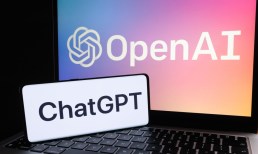OpenAI, Google, Meta, Anthropic, Amazon, Mistral and others are churning out newer or premium versions of existing models. But they are also moving past generalist chatbots toward custom-built intelligence for industries or sectors.
This may be where the next round of innovation will come from. Here’s a look at what’s been announced this month thus far:
OpenAI’s o3‑pro
OpenAI has released o3‑pro, a premium version of its most advanced reasoning model that is optimized for science, education, programming, business and writing assistance.
Generally, the ‘pro’ version takes more time to generate responses, trading speed for accuracy. Compared to the ‘pro’ version of o1, o3-pro also responds more slowly since it has access to tools.
OpenAI recommends using o3-pro for “challenging questions where reliability matters more than speed.”
However, image generation is not yet available for o3-pro.
In essence, o3‑pro isn’t bringing new capabilities but rather refining existing ones through compute-intensive reasoning that is better suited to critical domains where hallucinations cost time or money.
Google’s Gemini 2.5 Pro
Google has released an upgraded preview of Gemini 2.5 Pro, its smartest model yet.
The search giant said this model excels at coding, math and science, as well as knowledge and reasoning capabilities. This model also has improved style and structure, making it more creative in responding.
Gemini is Google’s flagship family of AI models and the first major natively multimodal model, meaning it was built from the ground up to be able to handle text, images, code and video.
In May, Google also unveiled a preview of Gemini 2.5 Pro, which it said has “significantly” improved capabilities for coding over the original.
Anthropic’s Claude Gov
Anthropic has unveiled Claude Gov, a custom version of its Claude LLMs tailored for U.S. national security and intelligence applications.
Claude Gov’s family of models embeds feedback from government customers to address real-world operational needs. They are designed for operational support, intelligence analysis, and threat assessment.
How Claude Gov is different from traditional Claude:
- Models are more willing to engage with classified information instead of refusing to answer.
- Greater understanding of intelligence documents.
- Greater language and dialect proficiency related to national security matters.
- Improved understanding of cybersecurity data for intelligence analysis.
Claude Gov follows ChatGPT Gov, which OpenAI introduced in January to cater to the needs of the U.S. government.
Meta’s V‑JEPA 2
While Meta is known for its open-source Llama LLMs, it has actually been developing a world model called V-JEPA for years. This project has long been spearheaded by Turing award winner Yann LeCun, who is the chief AI scientist.
A world model is an AI system that builds an internal digital twin of an environment so it can learn about how things interact in the real world. In contrast, LLMs focus on understanding human language and predicting what words or snippets of code come next.
This month, Meta unveiled V‑JEPA 2, a world model trained on video that lets it understand the laws of physics to simulate the real world better. For example, if a ball is thrown in the air, it will fall to the ground.
V-JEPA 2 can be used for zero-shot robot planning, meaning the robot doesn’t have to be pre-trained to interact with new objects.
In lab trials, robots equipped with V‑JEPA 2 could interpret unfamiliar objects, pick them up, and respond to physical stimuli.
V-JEPA 2 is a 1.2-billion parameter model.
Mistral’s Magistral
French AI startup Mistral has launched Magistral, which comprises two chain‑of‑thought reasoning models. They are Magistral Small (24 billion parameters and open source) and Magistral Medium (proprietary, for enterprises).
As Mistral’s first reasoning model, Magistral works for different enterprise use cases including structured calculations and programmatic logic to decision trees and rule-based systems.
Magistral’s chain-of-thought works across multiple languages, including English, French, Spanish, German, Italian, Arabic, Russian, and Simplified Chinese.
The startup said Magistral is designed for research, strategic planning, operational optimization, and data-driven decision-making.
Notably, the startup said Magistral’s conclusions “can be traced back through its logical steps, providing auditability for high-stakes environments with domain-specialized AI.”
This is especially critical for regulated industries and sectors such as legal, finance, healthcare and government sectors.
For all PYMNTS AI coverage, subscribe to the daily AI Newsletter.
Read more: Report: Reasoning AI Models Fail When Problems Get Too Complicated
Read more: Microsoft Plans to Rank AI Models by Safety
Read more: AI Models and Tools: OpenAI to Release an Open-Source AI Model




